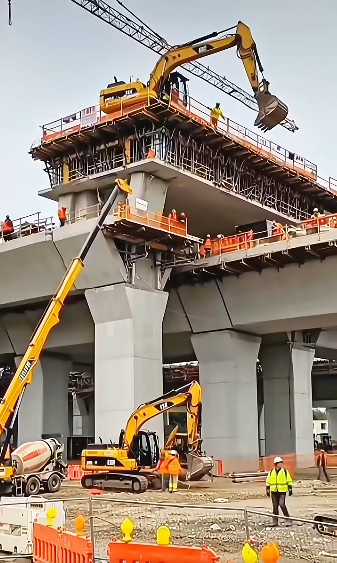Lessons from the Sampoong Department Store Collapse: A Cautionary Tale for Urban Development
The catastrophic collapse of the Sampoong Department Store in Seoul on June 29, 1995, is etched in the annals of South Korean history as one of the most devastating engineering failures of the modern era. With a tragic toll of 502 lives lost and nearly 1,000 injured, this incident has become a critical reference point for urban planning and construction standards, serving as a stark reminder of the perils that accompany rapid urbanization and development. The Sampoong disaster cannot be merely regarded as a construction failure; it is a complex tapestry woven from threads of greed, negligence, and a desperate pursuit of modernity.
South Korea’s remarkable transformation from a war-torn nation in the 1950s to a global economic powerhouse by the 21st century is often referred to as a “miracle.” However, the rapid pace of this growth has come at a significant cost, highlighted by incidents such as the Sampoong disaster. Following the Korean War, the country saw a surge in infrastructure development and urbanization, with cities like Seoul emerging as vibrant hubs of commerce and culture. Yet, this rapid evolution has also led to serious oversights in safety and regulatory compliance, particularly in the construction sector. The precedence of speed over safety in construction practices has created an environment ripe for disaster.
The Sampoong Store: A Symbol of Growth and Tragedy
The Sampoong Department Store, once a beacon of consumer culture and modernity, was built on a former landfill in the affluent district of Gangnam. Launched in 1987, it was intended to be a four-story apartment complex but was hastily repurposed into a department store. This shift in purpose set off a chain of ill-fated decisions that ultimately compromised the structural integrity of the building. Owner Lee Joon’s insistence on modifying the original plans to accommodate commercial needs led to the removal of essential support columns and zoning law violations, precariously altering the intended design and safety measures. The original structural engineers warned against these changes, but economic pressures and insistence from the owner silenced these concerns.
The decision to relocate heavy air-conditioning units to the roof without employing cranes—dragging them across the structure instead—was one of the final missteps that contributed to the collapse. This reckless decision not only disregarded basic engineering principles but also highlighted a broader cultural attitude prioritizing immediate profitability over long-term safety. On that fateful day, visible cracks in the building had alarmed staff and customers alike, prompting some emergency measures. However, the store remained open, and tragically, this negligence culminated in a horrific disaster that shocked the nation. Eyewitness accounts from that day describe the chaos and horror as the building crumbled, a poignant reminder of the human cost of such oversights.
Impact on Urban Policy and Development Practices
In the aftermath of the Sampoong collapse, the South Korean government was pressured to reassess its urban planning, construction regulations, and safety standards. Investigations revealed that a staggering number of buildings in Seoul were either unsafe or in need of substantial repairs, with only one in fifty deemed secure. This crisis of confidence in the built environment highlighted the pervasive corruption and negligence that had infiltrated the construction industry, stemming from a national ethos that prioritized rapid development over due diligence and safety. The need for a robust regulatory framework became crystal clear, leading to stricter enforcement of building codes and safety inspections.
The ramifications of this disaster extended beyond just construction practices; it prompted a societal reckoning regarding accountability and ethics in business. Public outrage targeted not only Lee Joon and his associates but also the broader system that allowed such reckless behaviors to flourish. As a consequence, significant reforms were introduced to enhance safety measures and to hold construction companies accountable for their actions. These reforms included mandatory safety training for construction workers, regular audits of building projects, and a commitment to transparency in all architectural decisions. However, the lessons learned from Sampoong have not been completely absorbed, as evidenced by subsequent tragedies, such as the MV Sewol ferry sinking in 2014, which echoed the negligence witnessed in the Sampoong case.
Continued Relevance of the Sampoong Disaster
The Sampoong disaster serves as a cautionary tale not only for South Korea but for cities worldwide grappling with rapid urbanization. As developing nations—particularly in Asia—embark on ambitious infrastructure projects, the Sampoong incident underscores the necessity for strict adherence to safety regulations and ethical construction practices. Urban planners and policymakers must prioritize the welfare of citizens and the integrity of the built environment while navigating the complexities of modernization. This reflection is especially pertinent in an age when cities are experiencing unprecedented growth, with many facing similar pressures that led to the Sampoong tragedy.
Today, as Seoul continues to evolve into a global metropolis, the story of the Sampoong Department Store acts as a reminder of the potential human cost of unchecked urban growth. Visiting the site today reveals little of the tragedy that unfolded there; a luxury apartment complex now occupies the space where the store once stood. This transformation reflects the city’s ongoing metamorphosis and the ever-present challenge of balancing progress with safety and historical awareness. Urban landscapes are constantly changing, but the principles of responsible development should remain steadfast, ensuring that the mistakes of the past are not repeated.
Conclusion: A Call for Vigilance in Urban Planning
The collapse of the Sampoong Department Store remains an indelible part of South Korea’s narrative, symbolizing both the astonishing heights of economic achievement and the grave oversights that can accompany rapid change. As cities around the globe continue to expand and modernize, the lessons from Sampoong must resonate loudly: the pursuit of progress should never come at the expense of public safety and ethical responsibility. A vigilant approach to urban planning, rooted in principles of safety, transparency, and community welfare, is essential in preventing future tragedies and fostering sustainable growth. The legacy of Sampoong serves as a clarion call for future generations of planners, builders, and citizens alike, urging them to honor the memories of those lost by prioritizing the safety and integrity of our urban environments.

















